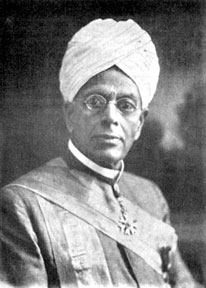by Unknown; published February 4, 2004
Tamil man who might have changed the fate of the tamils but failed
The path to Independence With the surrender of the Kandyan kingdom to the British in 1815, Sri Lanka lost her independence. The last king, Sri Wickrema Rajasinghe was deposed and the Kandyan kingdom was vested in the sovereign of the British Empire. Earlier, in 1796, the British had taken over the maritime provinces or low country areas from the Dutch and the British administration in Madras administered these provinces. The country became a Crown Colony on 1 January 1802, which meant that the country was to be ruled directly by what was then known as the ‘Imperial Government’. A Governor represented the British monarch. The first Governor in Ceylon (as Sri Lanka was then known) was Frederick North. The Governor ruled according to directions given from London by the Secretary of the State for the Colonies. The British set up their legal system, introduced the English language and encouraged the Christian religion. The people, however, did not accept the loss of independence tamely and there were two rebellions in the Kandyan provinces – one in 1817 and the other in 1848. These were suppressed at considerable loss in life and property.

Sir Ponnambalam Ramanathan
As time went on, the locals who were being educated in English and were getting used to the western way of life, started agitating for a greater share in the management of the country’s affairs. They were mainly lawyers, doctors and teachers who began showing an interest in politics. The Ceylon League, followed by other organisations like the Ceylon Agriculture Association and the Ceylon National Association were formed to press for a substantial measure of self-government. They believed in achieving this through peaceful means rather than through rebellion and force. Among those who took the lead in the agitational campaign was Ponnambalam Ramanathan (later Sir) who had studied law in the Presidency College, Madras and under A. G. Richard Morgan, the Attorney General. Born on 16 April 1851, he was called to the Bar in 1876 and was appointed a member of the Legislative Council (an advisory body to the Governor) in 1879 to succeed his uncle, Sir Muttu Cumaraswamy on the latter’s death. For the next fifty years, Ramanathan was to play a major role in the country’s struggle for freedom. There was a demand that members to the Legislative Council should be on the basis of territorial instead of communal representation, that is, the members should be elected to represent districts rather than communities divided by race or religion. Another demand was that that the number of unofficial members should be more than official members.
On 16 January 1912, Ramanathan was elected to represent the “educated Ceylonese”. The 1915 riots paved the way for more agitation and the formation of the Ceylon National Congress, of which Ramanathan was a pioneer. This resulted in the 1920 constitution which increased the number of members of the Legislative Council to 37 with 14 official and 23 unofficial members, the latter obtaining a majority for the first time. Yet the powers of the Council remained virtually the same with initiation of money bills still lying with the Governor. He also had the power to stop the proceedings of the Council. The numbers were further increased to 12 official and 37 unofficial members in 1924. Sir Ponnambalam Ramanathan was identified as the most courageous and eloquent member in the Council, who fought every step taken by the Government to cover up the mistakes by officials, who were all British. He argued with the Governor and with some of the ablest officials like the Attorney General. While he spoke on numerous subjects with the benefit and welfare of the masses at heart, among his biggest achievements is the setting up of the Post Office Savings Bank (which has now been converted to the National Savings Bank). It was the result of an eloquent speech he made in November 1880 convincing the Governor of the need of such a bank for the public to start on the savings habit. He also took the initiative in setting up the Law College representing matters on the need for facilities for interested students to study law. Being a close associate of Colonel Olcott, he fought for the Vesak holiday, which the Government acceded to in 1885. In the social service front, he established the Ramanathan College for girls in 1913 and Parameswera College for boys in 1921. He died on 26 November 1930.
Continued agitation led to the appointment of the Donoughmore Commission and the setting up of the State Council in 1931 based on its recommendations. The campaigners were still not satisfied and continued to demand self-government. On 31 October 1945, the British Government announced that they were in sympathy with the desire of the people of Ceylon to advance towards Dominion Status. This followed the visit of the Soulbury Commission, which recommended a parliamentary system of government. On 18 June 1947, a declaration was made in the British Parliament that steps would be taken “to confer upon Ceylon fully responsible status within the British Commonwealth of Nations.” On 10 December 1947, the Ceylon Independence Act received Royal assent and it took effect on 4 February 1948.